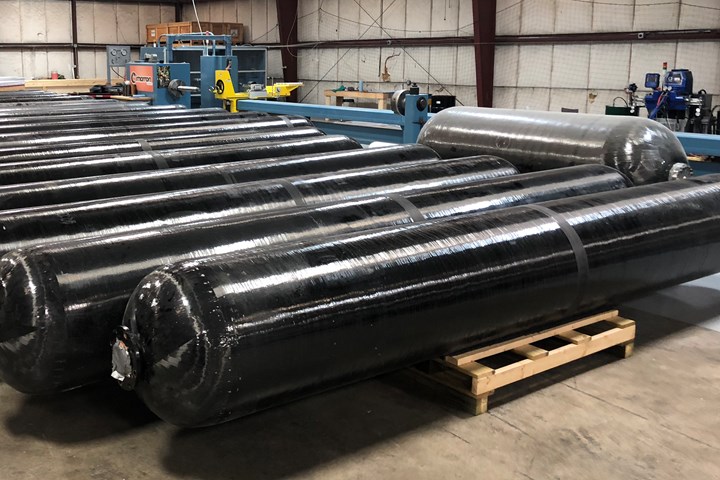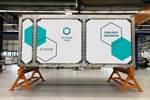Cimarron Composites to supply Shell with hydrogen gas transport modules
Composite cylinders at 517 bar and 2,000 liters will enable 1,200 kilograms of hydrogen gas to be transported between fueling stations on 40-foot-long trailers.

Photo Credit: Cimarron Composites
Cimarron Composites (Huntsville, Ala., U.S.) has signed a five-year purchase agreement with Shell Oil company to provide advanced composite cylinders for hydrogen gas transport modules.
Operating at 517 bar (7,500 psi), the 2,000-liter cylinders will allow Shell to transport at least 1,200 kilograms of hydrogen gas on 40-foot-long trailers between fueling stations in California.
Cimarron president Tom DeLay explains these cylinders are approved for worldwide applications, and similar trailers will be used in locations across Europe. They can also be used for other industrial gases.
Cimarron’s carbon fiber-reinforced composite tubes can be customized to various lengths for volumes between 540 and 3,000 liters. Cimarron is currently developing a 700 bar (10,000 psi) version of a similar tube for use in automotive and truck vehicles.
All of Cimarron’s tanks pass the required tests for US DOT and ADR approvals as specified by the UN ISO 11515 document.
Related Content
-
Infinite Composites: Type V tanks for space, hydrogen, automotive and more
After a decade of proving its linerless, weight-saving composite tanks with NASA and more than 30 aerospace companies, this CryoSphere pioneer is scaling for growth in commercial space and sustainable transportation on Earth.
-
Composites end markets: Pressure vessels (2024)
The market for pressure vessels used to store zero-emission fuels is rapidly growing, with ongoing developments and commercialization of Type 3, 4 and 5 tanks.
-
Composites end markets: New space (2025)
Composite materials — with their unmatched strength-to-weight ratio, durability in extreme environments and design versatility — are at the heart of innovations in satellites, propulsion systems and lunar exploration vehicles, propelling the space economy toward a $1.8 trillion future.






